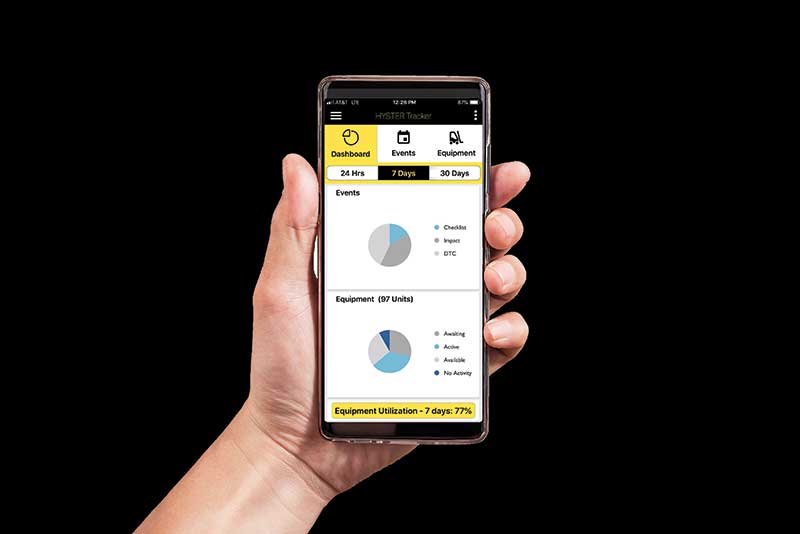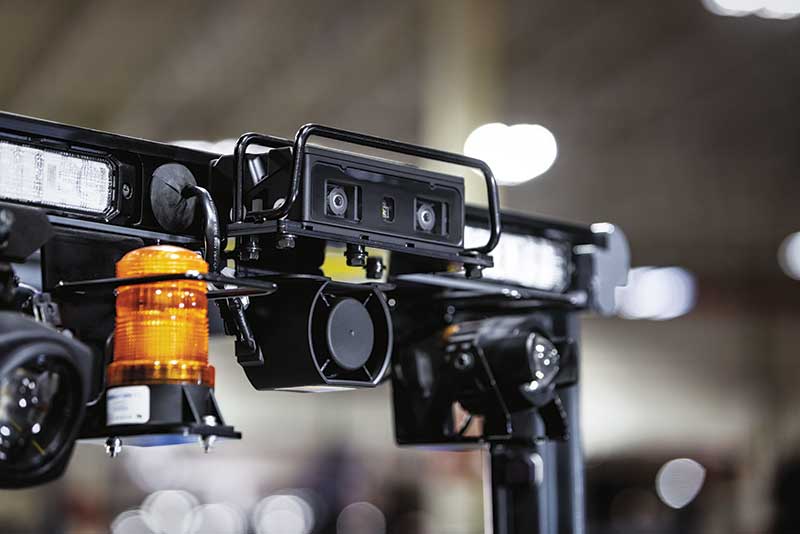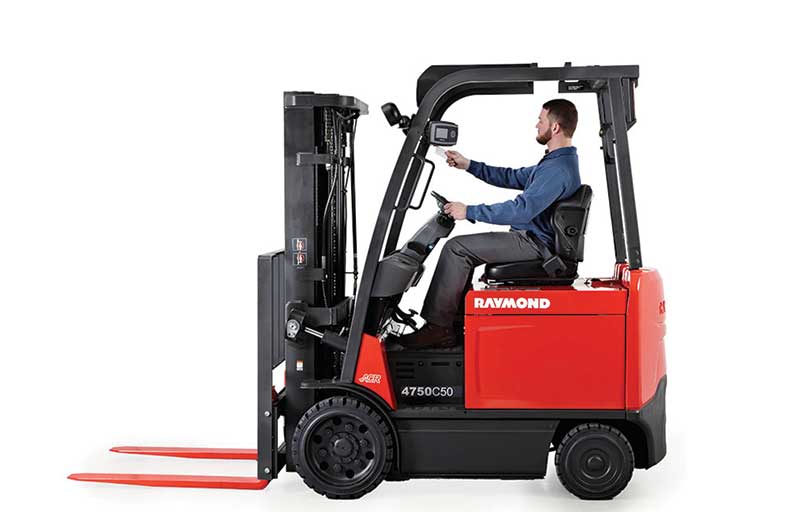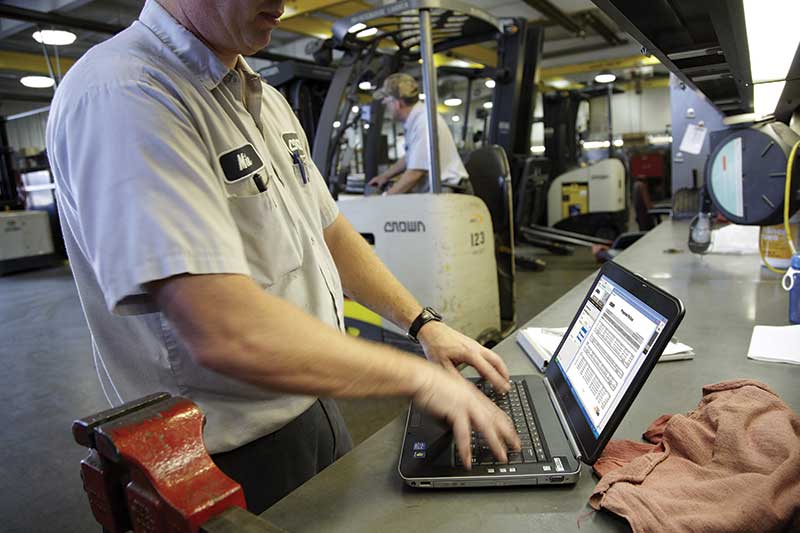Your telematics data to-do list
From real-time operational data to fleet right-sizing, lift truck telematics have a strong role to play in everything from safety to maintenance and even operator training. If at first it seems overwhelming, step back, take a deep breath and go small.
As lift trucks have proven every day for the past few years, the easy part their information management is collecting the data. The hard part is figuring out how to make good use of it.
 Roger Tenney calls it intimidation by data. And he should know. For the past 35 years, he’s focused on telematics and how people react to it, most recently as senior manager of telematics and technologies solutions at Mitsubishi Logisnext Americas.
Roger Tenney calls it intimidation by data. And he should know. For the past 35 years, he’s focused on telematics and how people react to it, most recently as senior manager of telematics and technologies solutions at Mitsubishi Logisnext Americas.
Today, the vast majority of lift trucks sold have onboard telematics technology that monitors a wide range of data from who is driving the truck to how the equipment is being used. However, it’s tough even for the experts to say to what degree operations managers realize the potential value of that data.
John Rosenberger estimates that only 40% of companies actively and consistently use lift truck telematics to optimize their operations. As director of iWarehouse Gateway and global telematics for The Raymond Corp., Rosenberger constantly talks to people managing truck fleets and knows that even those 40% get intimidated by the data before long, and their attention to the details wanders.
Then there’s another 30% to 40%, Rosenberger says, who use telematics data casually. When asked about the final 20%, his voice just kind of trails off.
The only trouble is no operation can truly afford to be meh about data. “Probably 70% of all operations are giving up 20% or more in productivity,” says Tenney. If that doesn’t get your attention, then turn the page now.
For those of you still with me, let’s walk through the data pile.
Buckets of data, who cares
Telematics are the starting point for insights that could help users improve productivity, safety practices, operating efficiency, regulatory compliance and energy management. That’s according to Chad McIntyre, Toyota’s IoT delivery manger. You could call that your data to-do list.

As Collin Rush, director of InfoLink customer support at Crown Equipment, says that data has both real-time and historical roles. An example of real-time data is an alert sent to the operator and manager every time the truck undergoes an impact above a certain threshold. A historical role of that alert occurs when it is rolled up into the Cloud to build a database for future maintenance requirements.
But impacts are just the tip of the telematics iceberg. Rosenberger breaks down the types of data collected into five buckets. They are:
- access control,
- pre-operation checklist,
- metrics,
- impacts, and
- fault codes.
It’s also worth noting that different functions in the organization have different levels of interest in the data. In other words, lift truck telematics are not just for operations managers.
Access control is literally the base line for everything else. “It enforces rules that only certified/trained operators have access to this particular truck. When an operator swipes an access card to use the truck, the system decides if the person has the proper training/certification,” explains Dan Sells, telematics business development manager at Hyster. The primary people who care about this data are human resources and the training department.
The pre-operation checklist required by OSHA is a template that takes less than three minutes for the operator to complete. It reviews the status of the truck from safety devices to fluid levels. As Nic Temple, director of business development, emerging technologies at Yale Materials Handling Corp., explains, the data collected here and saved in the Cloud can enable easier access compared to paper-based systems of an operating incident that requires an agency audit. The primary people who care here are HR and maintenance.

Metrics track the driver and the truck, explains Rosenberger. And metrics are all about the company and what it wants to track and measure. Typical metrics include dead man hours, log-in hours, travel times and speed, to name a few. Often, this data is critical to maintenance schedules. The primary people who care here are operations managers and maintenance.
Impacts tracks shocks to the truck. While accelerometers record each impact and its severity, a best practices checklist determines what should be done next, explains Sells. Responses can range from maintenance to additional training for the operator, especially if you have a pattern of extreme shocks to the truck. The primary people who care here are operations managers, maintenance and training.
Fault codes, of which there can be hundreds on a single truck, are the sensors and cameras that track everything going on around the vehicle. They range from temperature sensors to those that track load weight and lift heights. As Rosenberger points out, these codes precisely identify when standard operating conditions have been violated to the detriment of efficient operational use of the truck. The primary people who care here are maintenance and sales, and service centers of the truck’s OEM.
Rosenberger estimates that telematics represent 2% to 8% of the total cost of a powered industrial truck. So, that in itself makes it worthwhile to do something with all that data coming your way.
Collect the data, now what?
If you feel a little overwhelmed about now, you are not alone. Overcoming data intimidation is difficult, says Tenney of Logisnext. That said, moving on is also manageable.
“Data is not sufficient,” explains McIntyre of Toyota. “You have to move on to turning that data into information then into knowledge that allows you to correctly assess the situation. The final stage is wisdom, which allows you to take appropriate action,” he adds.
McIntyre’s somewhat tongue-in-cheek yet so true to life progression for lift trucks is this: “Data is when a camera detects an object in the truck’s path. Information and knowledge are determining that the truck is on a collision course. Wisdom is hitting the brakes.”
There is both a real-time context for telematics and one that is longer term.
One example of real-time is what Temple calls his company’s package of advanced operator assist systems known as Yale Reliant. He says these onboard systems interface with not only the vehicle and its load status but the operating environment.
“Using precise, real-time location and proximity data to account for the warehouse environment, Yale Reliant triggers automatic performance adjustments based on facility-specific rules,” says Temple. Some examples of the system’s functionality, he continues, include real-time performance adjustments that limit speed in proximity to pedestrians and other equipment, slowing trucks at the ends of aisles and preventing operators from lifting and carrying loads that exceed the truck’s weight limit.
Late last year, Toyota introduced its version called Toyota Assist, which it calls advanced operator awareness technologies. This includes a System of Active Stability that stabilizes the rear axle on the truck when it senses the forklift is in a situation that could lead to instability.
Another aspect is what’s called a Smart Environment Sensor Plus (SEnS+) that provides operators with object and pedestrian detection. SEnS+ covers a 130-degree field of view up to 32 feet away from the truck. A stereoscopic vision system detects obstacles and differentiates between pedestrians and objects.
While those are two examples of the real-time aspect of telematics, Rush of Crown talks about a platform to manage that data. At Crown it’s known as the InfoLink operator and fleet management system. Other suppliers have their own names for their platforms, but the purpose of all is to improve usage of individuals, individual lift trucks and even entire fleets.
Rush says, “warehouse managers can gather a wealth of data about how their forklifts are used. This can help identify where warehouse employees may be relieved of non-value tasks to focus on more strategic and value-adding tasks that enhance operational performance.”
The platform can also be used to enable a more proactive approach to the service timing and requirements. “A healthier truck usually means less downtime and lower service and maintenance costs,” Rush adds.

Data as part of your workflow
Part of what makes telematics so difficult is the many different sources and uses of the data. And while telematics are about the operator and the vehicle, they are also about the fleet. “The challenge is to take the data and analyze it to make business decisions all as part of the normal workflow,” says Tenney of Logisnext.
That’s not always easy. But it is worth the effort considering the payoff says McIntyre. Remember, he’s the one who said the data can help users improve their safety practices, productivity, operating efficiency, regulatory compliance and energy management.”
And while that’s not that long a list, it might be too much to start with. “A common mistake many companies make when starting with data analytics is that they try to track and gather too much data,” says Rush. He suggests that an ideal, manageable approach is to focus on one or two operational objectives and expand from there.

Caption: An events and equipment dashboard of lift truck data helps optimize operations.
Responsibility for making telematics data manageable also rests with the OEMs, says Tenney. He says they need to figure out how to make the presentation of the data in a way that tells a story about all aspects of lift truck use. In addition, he says, that story needs to align with the business needs of the company and its objectives and metrics.
Tenney sums it all up this way. “Telematics provides data that can’t be obtained any other way. In the end, it helps to understand individual behavior as well as boost overall team productivity and efficiency. It’s not just about lift trucks.”

Article Topics
Crown Equipment News & Resources
Lithium Transition: It’s all about the outcomes Jumping on the narrow aisle trend Your telematics data to-do listLatest in Logistics
Under-21 driver pilot program a bust with fleets as FMCSA seeks changes Diesel back over $4 a gallon; Mideast tensions, other worries cited Four U.S. railroads file challenges against FRA’s two-person crew mandate, says report XPO opens up three new services acquired through auction of Yellow’s properties and assets FTR’s Trucking Conditions Index weakens, due to fuel price gains U.S. rail carload and intermodal volumes are mixed, for week ending April 6, reports AAR LM Podcast Series: Examining the freight railroad and intermodal markets with Tony Hatch More LogisticsAbout the Author
Subscribe to Logistics Management Magazine

Find out what the world's most innovative companies are doing to improve productivity in their plants and distribution centers.
Start your FREE subscription today.
April 2023 Logistics Management

Latest Resources
















